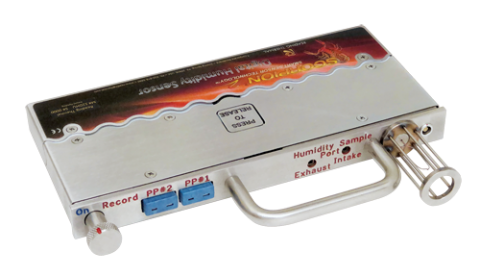If you are experiencing inconsistent quality or uneven baking in your industrial oven processes, it may be time to measure humidity with the SCORPION® 2 Profiling System from Reading Thermal and our other state-of-the-art sensors and sensor arrays.
The experts at Reading Thermal, a Reading Bakery Systems brand, have researched and investigated the commercial baking process for more than 25 years. Our team of heat transfer experts developed the SCORPION® 2 Profiling System and Data Logger, now an industry standard that measures and maps essential baking parameters, such as temperature and humidity, that affect the quality of your products.
Measuring the Humidity
The SCORPION® 2 Digital Humidity Sensor measures the absolute moisture content of the thermal environment in both heating and cooling processes. The sensor travels through the oven with your product, yielding a precise profile of the moisture it experiences.
Mechanically, the Digital Humidity Sensor includes an Air Temperature sensor, two inputs for Product Core Temperature Measurement, and a proprietary humidity sampling system to measure Dew Point Temperature, Absolute Humidity, and Relative Humidity.
The sampling system contains patent pending Anti-Saturation Technology™, allowing measurements in very high dew point environments, such as steam injection.
The Digital Humidity Sensor is engineered to be compatible with direct gas fired (DGF) ovens. Unlike oxygen sensor technology, which can be off by up to 25% as a result of combustion gases in DGF ovens, the accuracy of the Digital Humidity Sensor remains the same regardless of the oven platform.
Analyzing the Results
In high temperature applications above 212°F (100°C), absolute humidity is displayed. The user can choose between % Moisture by Volume or Humidity Mass Ratio (lb water/lb dry air or kg water/kg dry air).
In low temperature applications below 212°F (100°C), % Relative Humidity is displayed.
In both high and low temperature applications, the dew point temperature and dry bulb air temperature is displayed.
Humidity in ovens is generally controlled by extraction fans and dampers. In proofers, the Digital Humidity Sensor is used to document the temperature and relative humidity of the proof cycle. In cooling tunnels, it is used to monitor dew point temperature to prevent condensation on the product surface which causes blooming.
If you manufacture bread, buns, or rolls that retain moisture, bake unevenly, or result in inconsistent product quality, consider our other state-of-the-art sensors and sensor arrays, such as the SCORPION® 2 Temperature Sensor Array, the SCORPION® 2 Air Velocity Sensor, and the SCORPION® 2 Heat Flux Sensor.
Measuring humidity in your commercial bakery oven can take your baking processes to a whole new level. Get in touch with Reading Thermal to learn more about our Digital Humidity Sensor and other innovative products. Contact us online, or call our headquarters in Sinking Spring, Pennsylvania at (610) 678-5890 Ext. 2.

